Likes
- Absolute bang for your buck champion these days.
- Showing great reliability and solid build quality.
- Excellent support network of fans and enthusiasts.
- Still a practical little 5-door hatch.
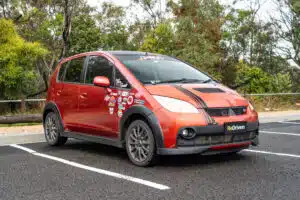
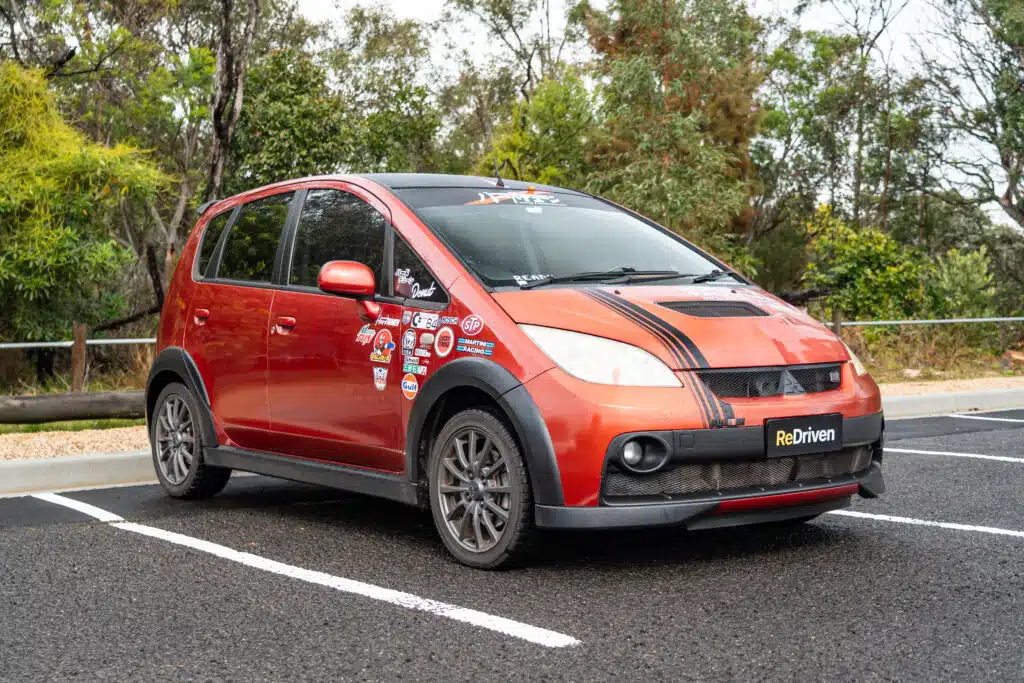
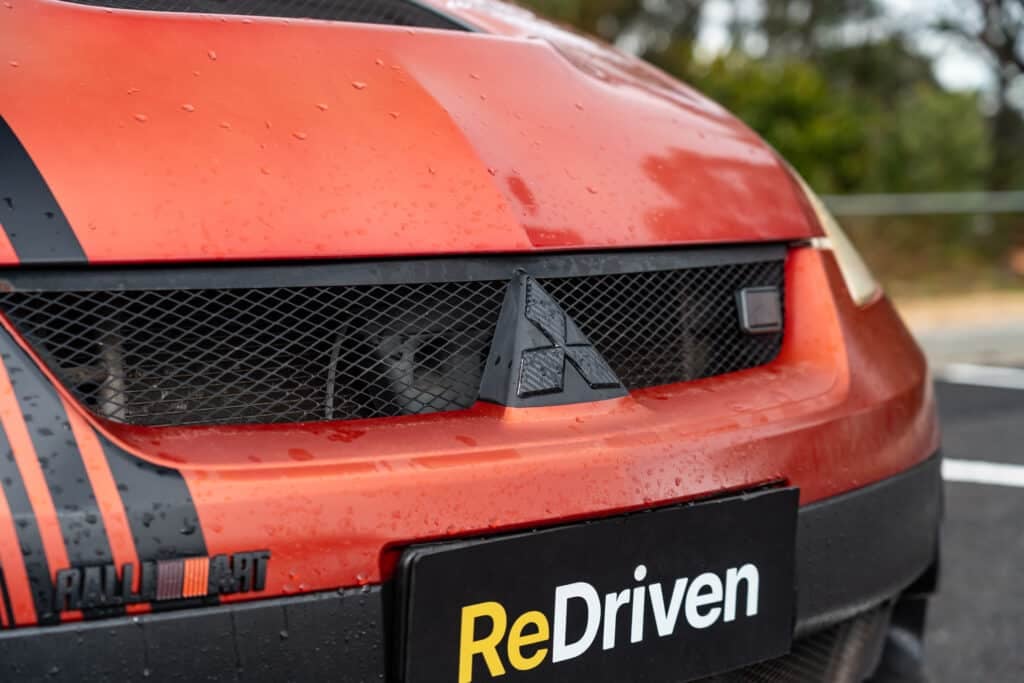
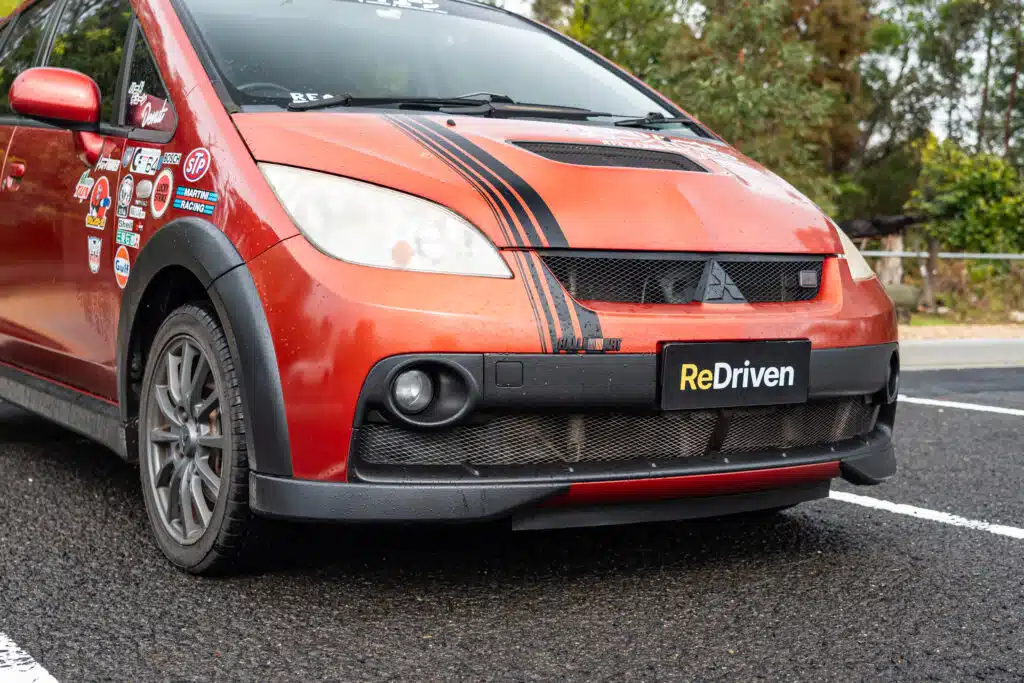
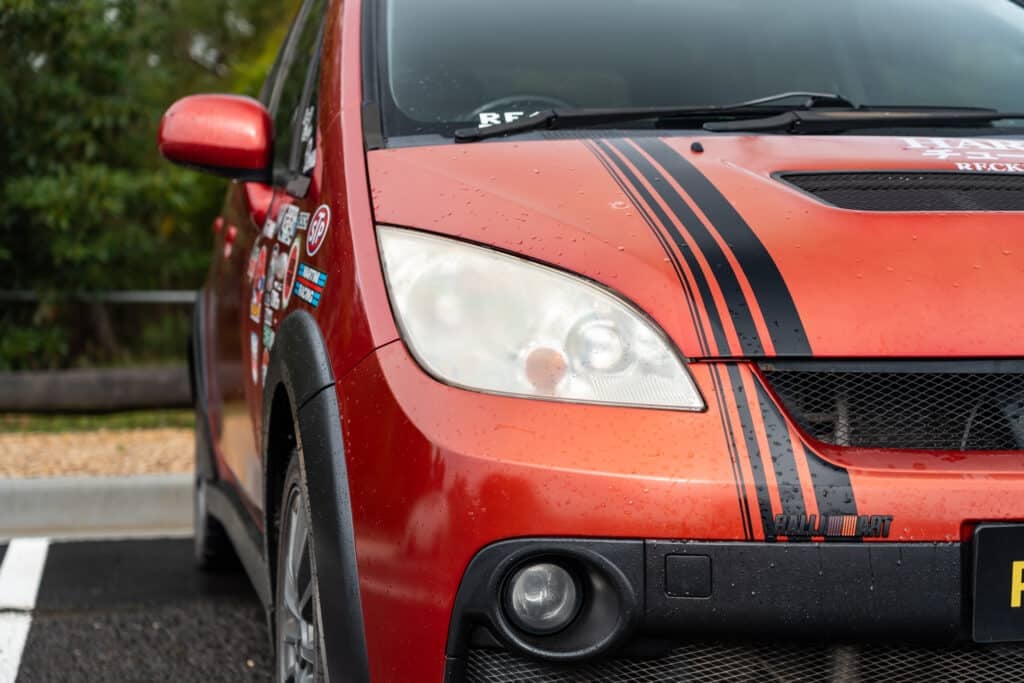
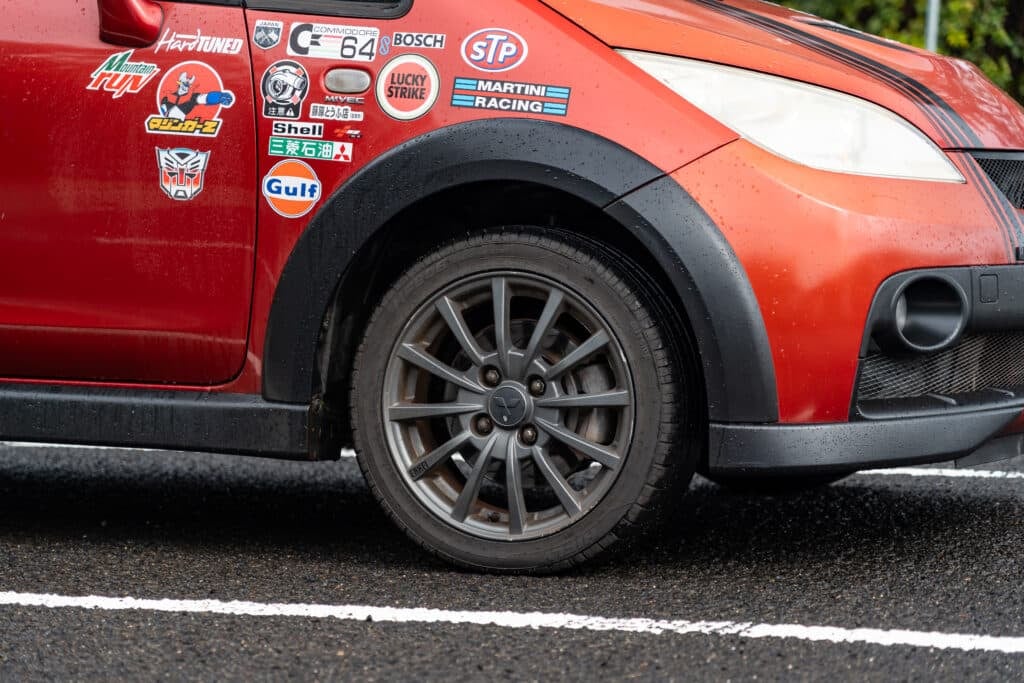
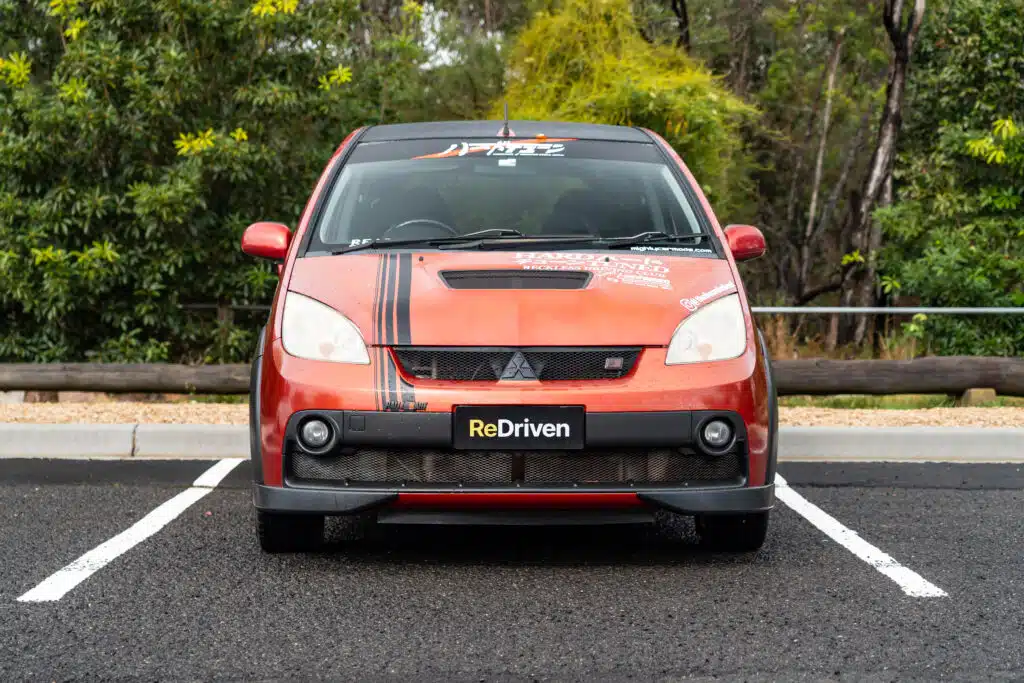
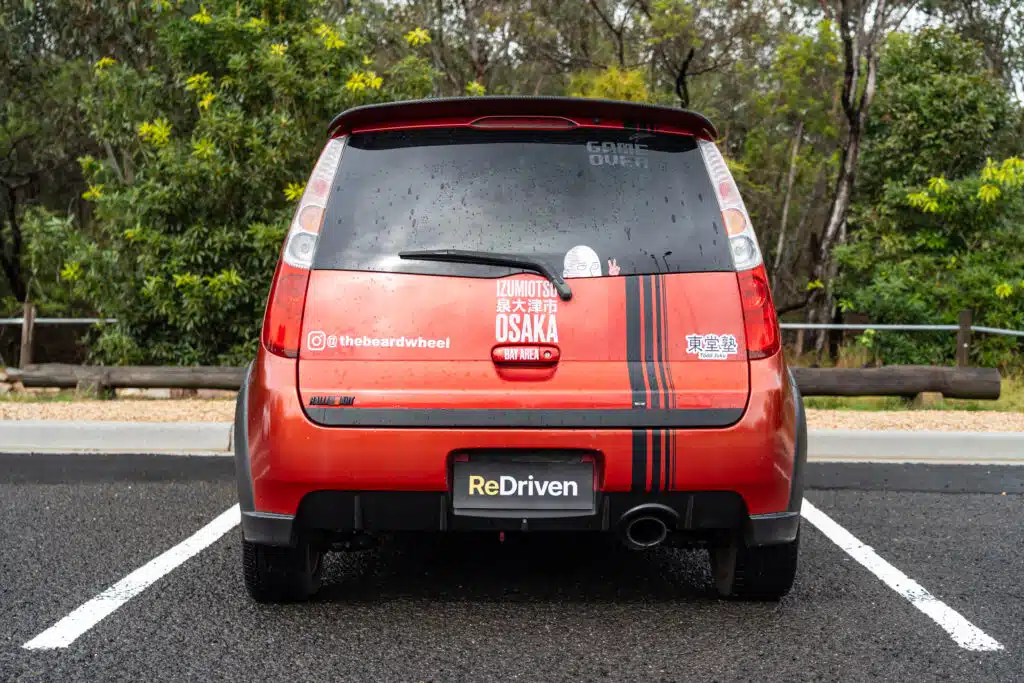

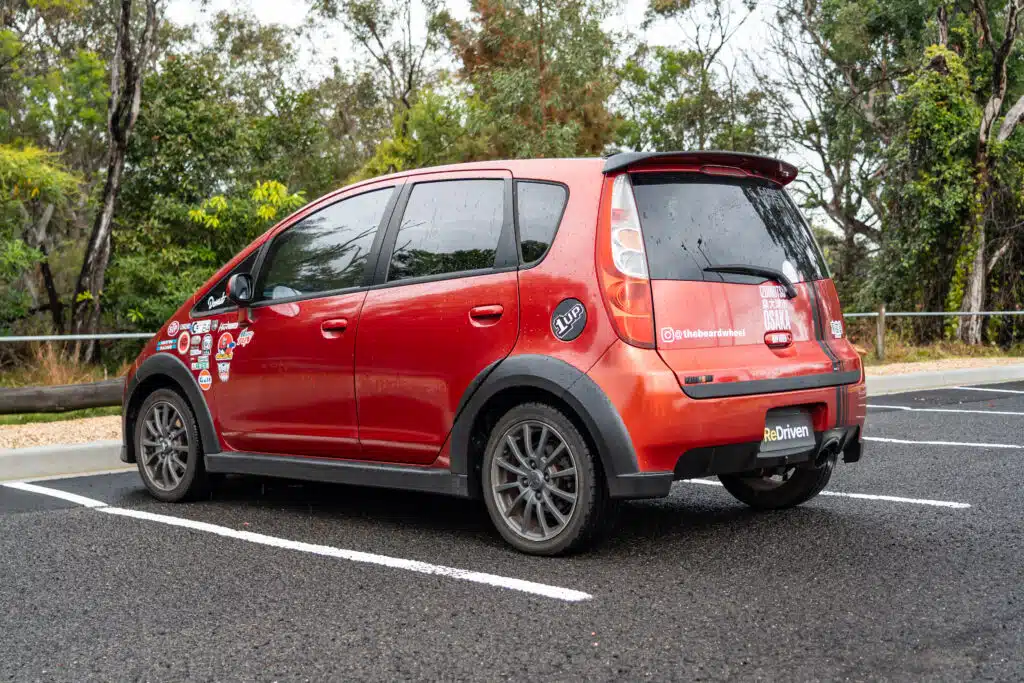
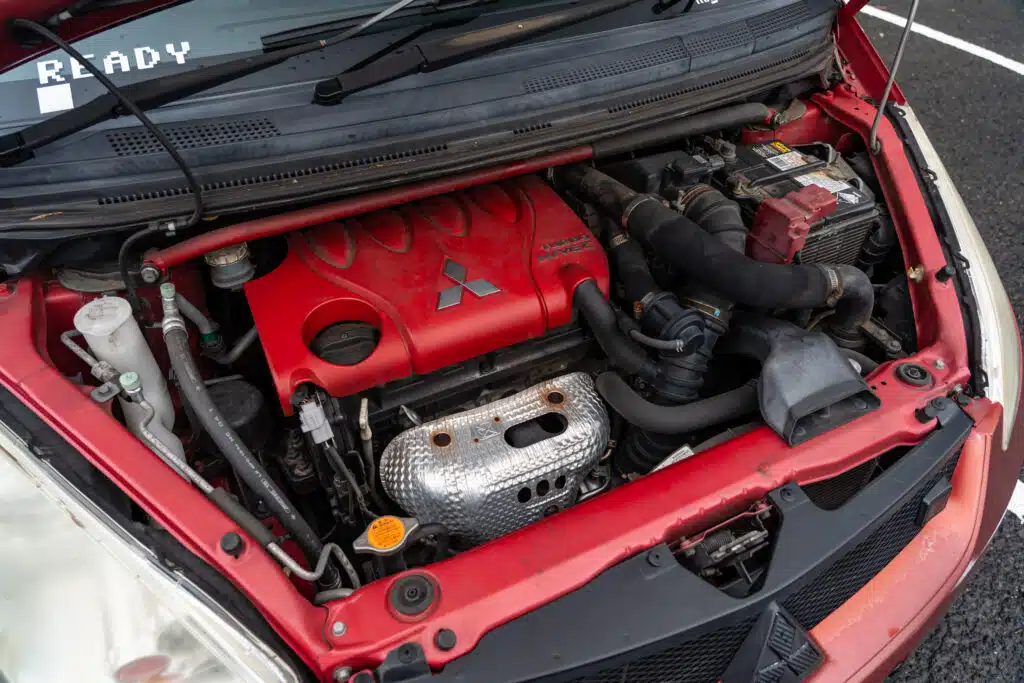
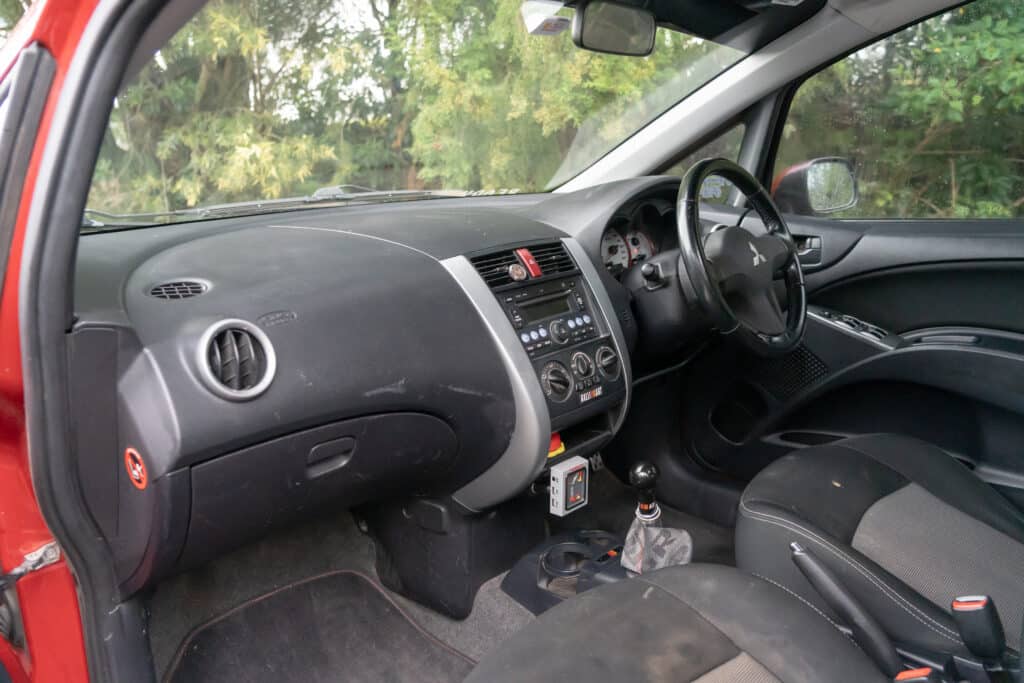
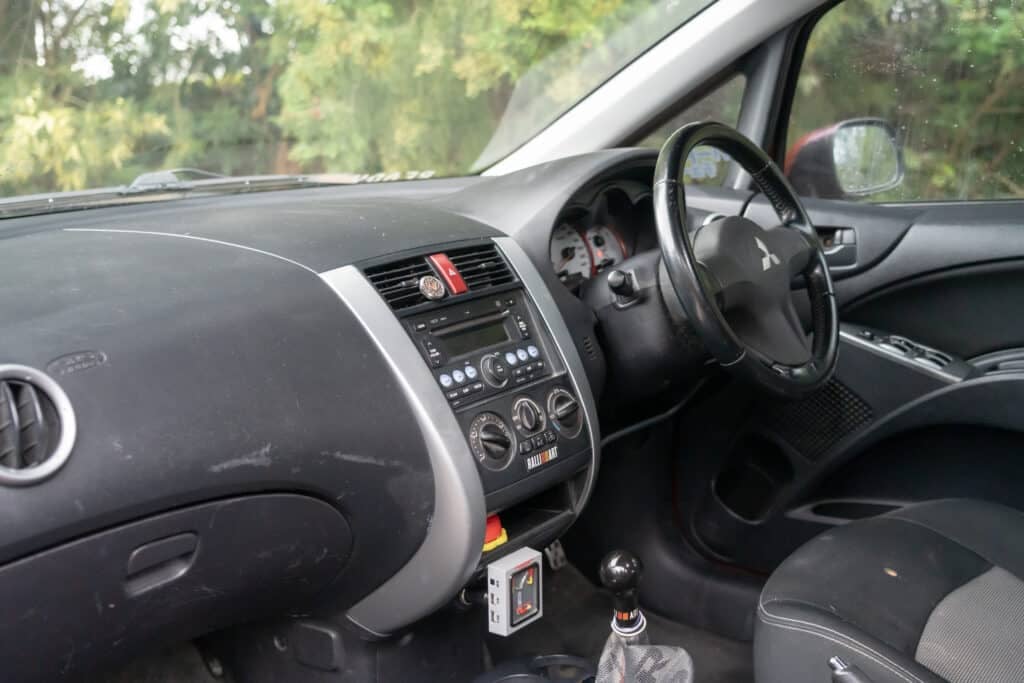
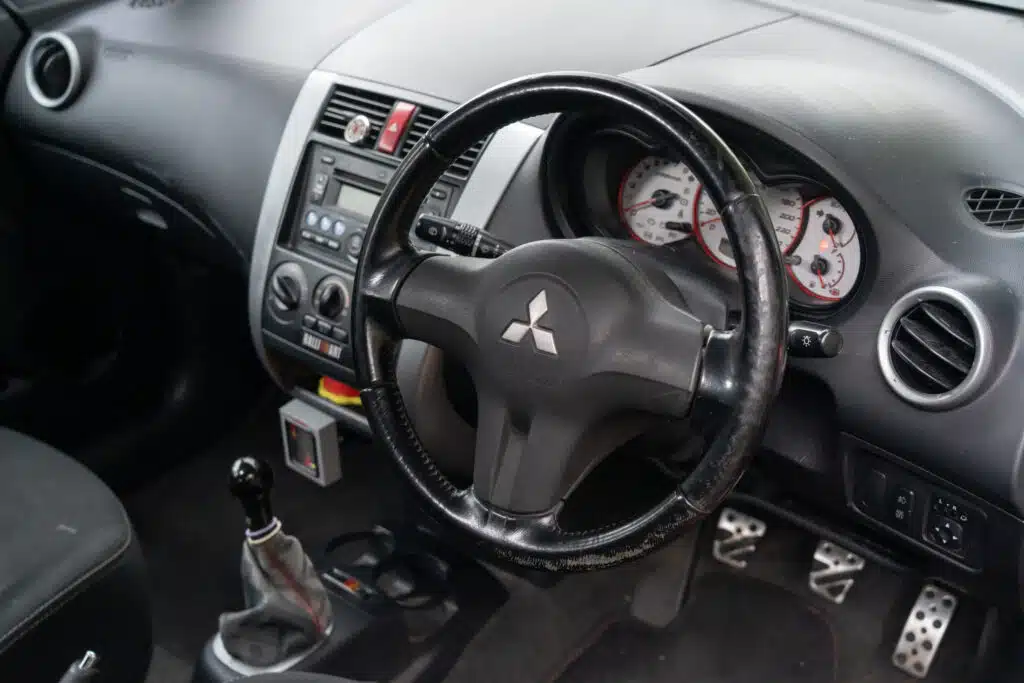
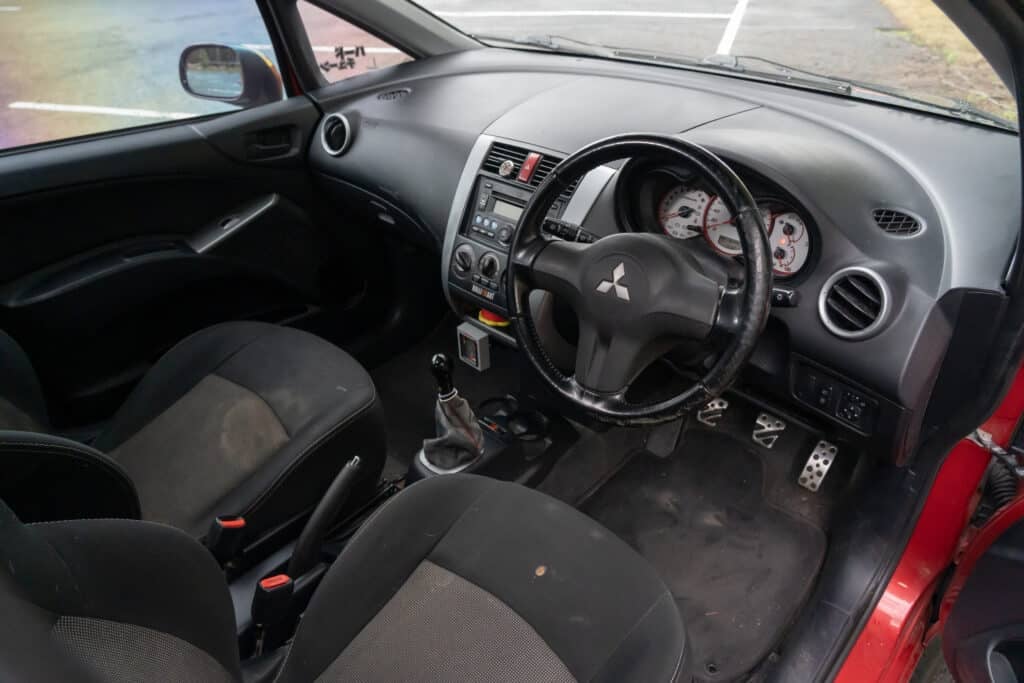
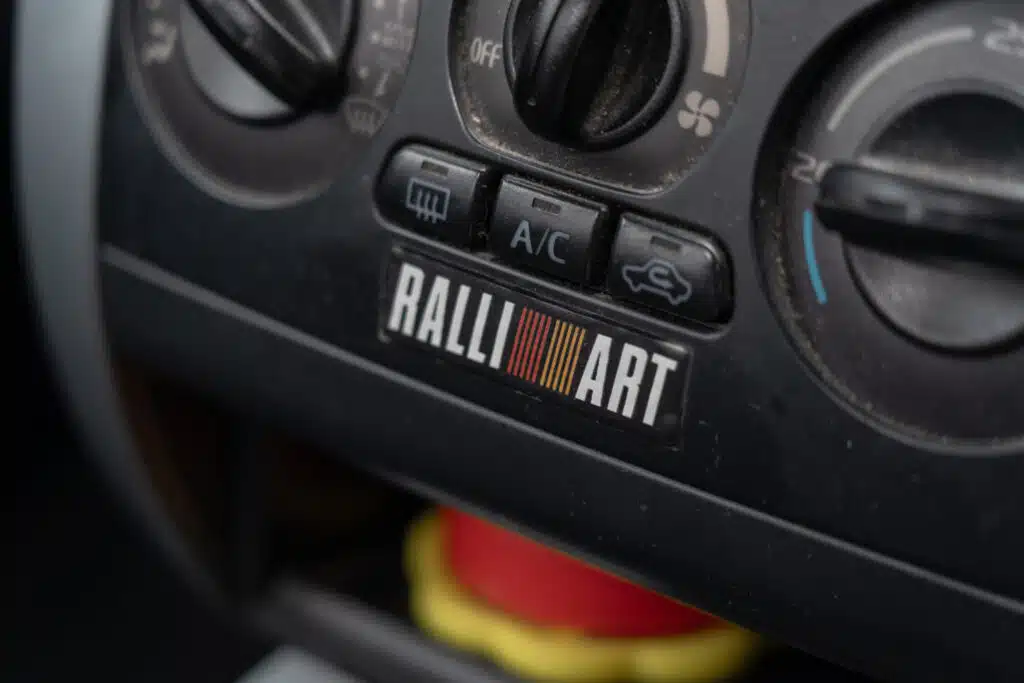
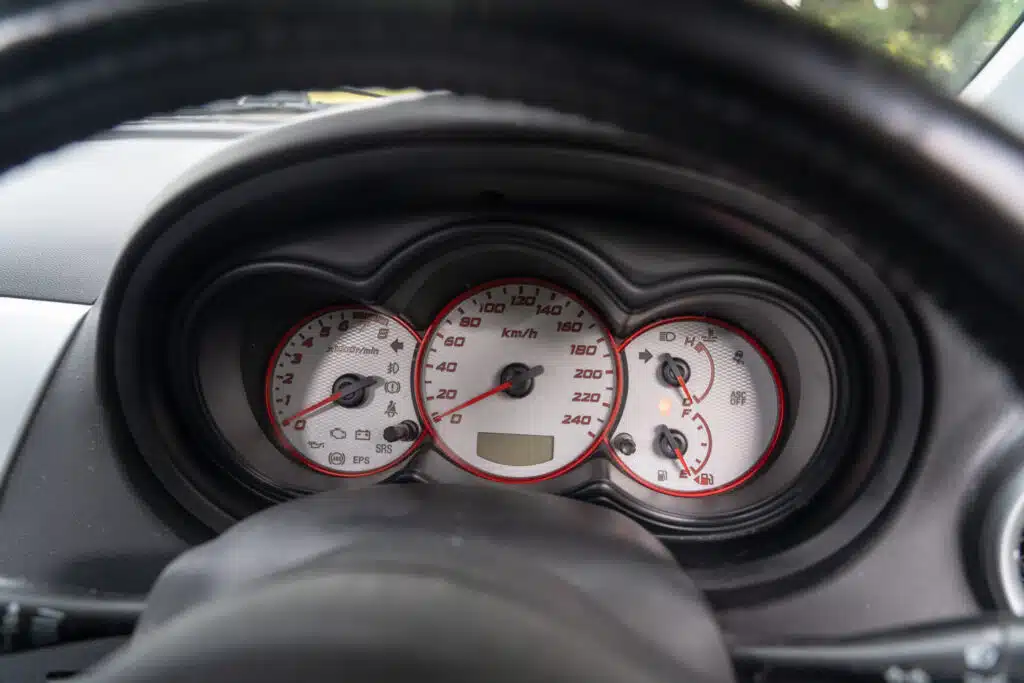
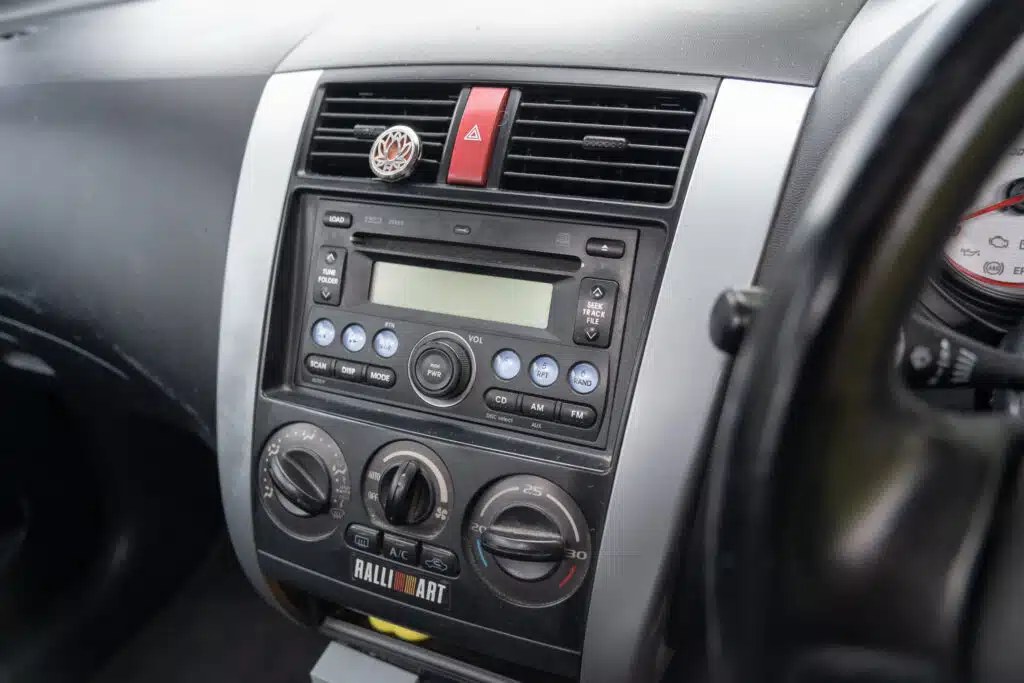
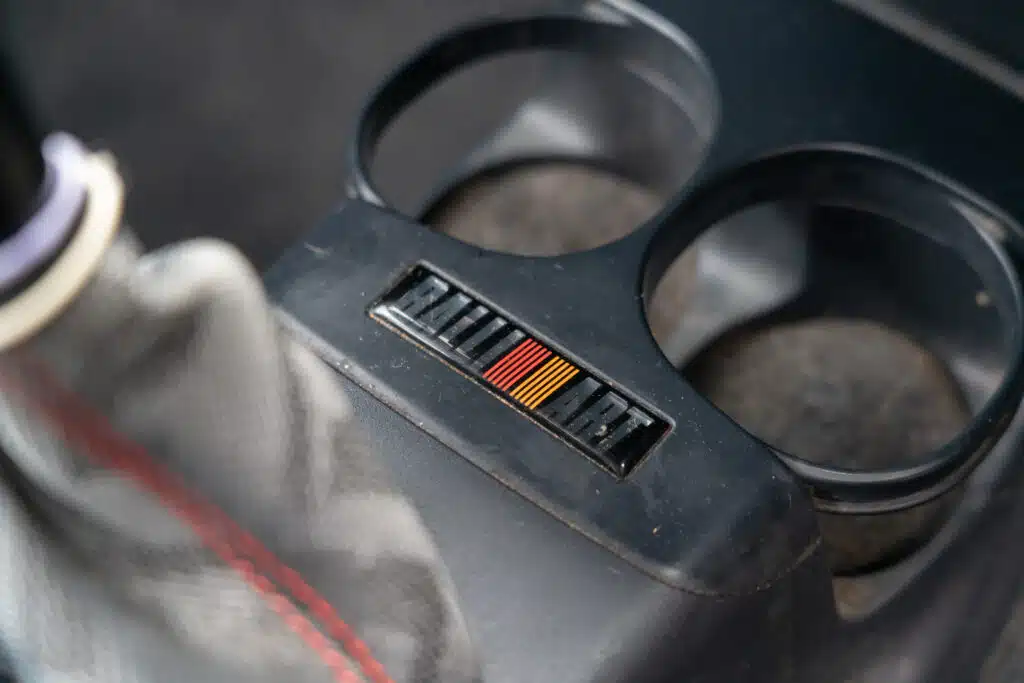
When the Mitsubishi Colt Ralliart landed in Australia in late 2006, it was essentially Mitsubishi’s way of giving the small hatchback segment a bit of extra spice. Sitting above the regular Colt range, it took the standard five-door hatch and infused it with a more playful chassis, a punchier turbocharged engine, and a handful of styling cues to let the world know it wasn’t just another city runabout. Overseas, it was sold in some markets as the Colt Ralliart Version-R, and in the UK as the Colt CZT, but the Australian model broadly mirrored the Japanese-spec Version-R setup.
Under the bonnet sat a 1.5-litre turbocharged four-cylinder petrol engine, codenamed 4G15, producing 113 kW (151 hp) and 210 Nm (155 lb ft). While that might not sound like much today, the Colt Ralliart’s light weight (just over a tonne) meant it was brisk enough to embarrass bigger machinery in the right conditions. This engine was paired exclusively to a close-ratio five-speed manual gearbox, no automatic option was ever offered here, sending drive to the front wheels through a conventional open differential. Internationally, some markets also saw a non-Ralliart 4G15 turbo with slightly lower output, but our Aussie-spec cars came with the full-fat tune.
The Colt Ralliart’s Australian sales run was relatively short, from its launch in 2006 through to around 2011, with a mid-cycle update arriving in late 2008. This facelift brought revised front and rear bumpers, a slightly more aggressive grille design, updated headlights and tail-lights, and a refreshed interior trim with subtly revised fabrics and finishes. Mechanically, it remained largely unchanged, though Mitsubishi tweaked the suspension tune slightly to improve ride comfort without losing the Ralliart’s eager handling.
Standard equipment was fairly generous for the time. The Ralliart added sportier front seats with extra bolstering, a leather-wrapped steering wheel, alloy pedals, climate control, and a six-speaker sound system. Outside, you got 16-inch alloys, a body kit with deeper front and rear bumpers, side skirts, and a roof spoiler, plus fog lights and “Ralliart” badging. The facelift models brought minor updates to audio connectivity and trim materials, but the overall spec remained steady throughout its run.
In Mitsubishi’s line-up of the era, the Colt Ralliart was pitched as a stepping stone for younger enthusiasts, a smaller, more affordable sibling to the Lancer Ralliart and Lancer Evolution, but with enough poke and handling sharpness to keep a grin plastered across your face. Against the wider market, it competed with the likes of the Suzuki Swift Sport, Ford Fiesta XR4, and Toyota Yaris Sportivo, but thanks to its turbo torque and low weight, it often felt the more potent package of the bunch.
Today, the Colt Ralliart sits in a bit of an odd place in the used-car market. On one hand, it’s rare, fun, and has a strong enthusiast following. On the other, Mitsubishi’s support network for this model is now limited, especially for Ralliart-specific parts like body panels, trim pieces, and certain turbo components, which can be tricky to source and often command a premium. The good news is that many mechanical consumables, brakes, suspension, service items, are still relatively affordable and easy to find, thanks to a huge aftermarket scene and an immense support network of passionate owners.
While it’s a cracking little hot hatch, the Colt Ralliart isn’t without its flaws, and as it ages, a few common issues are worth keeping in mind, but we’ll get to those in our “what goes wrong” section below. For now, think of it as one of those slightly forgotten performance bargains: rare enough to stand out at a cars-and-coffee meet, small and light enough to fling down a backroad with abandon, and just modern enough to daily without feeling like a chore.
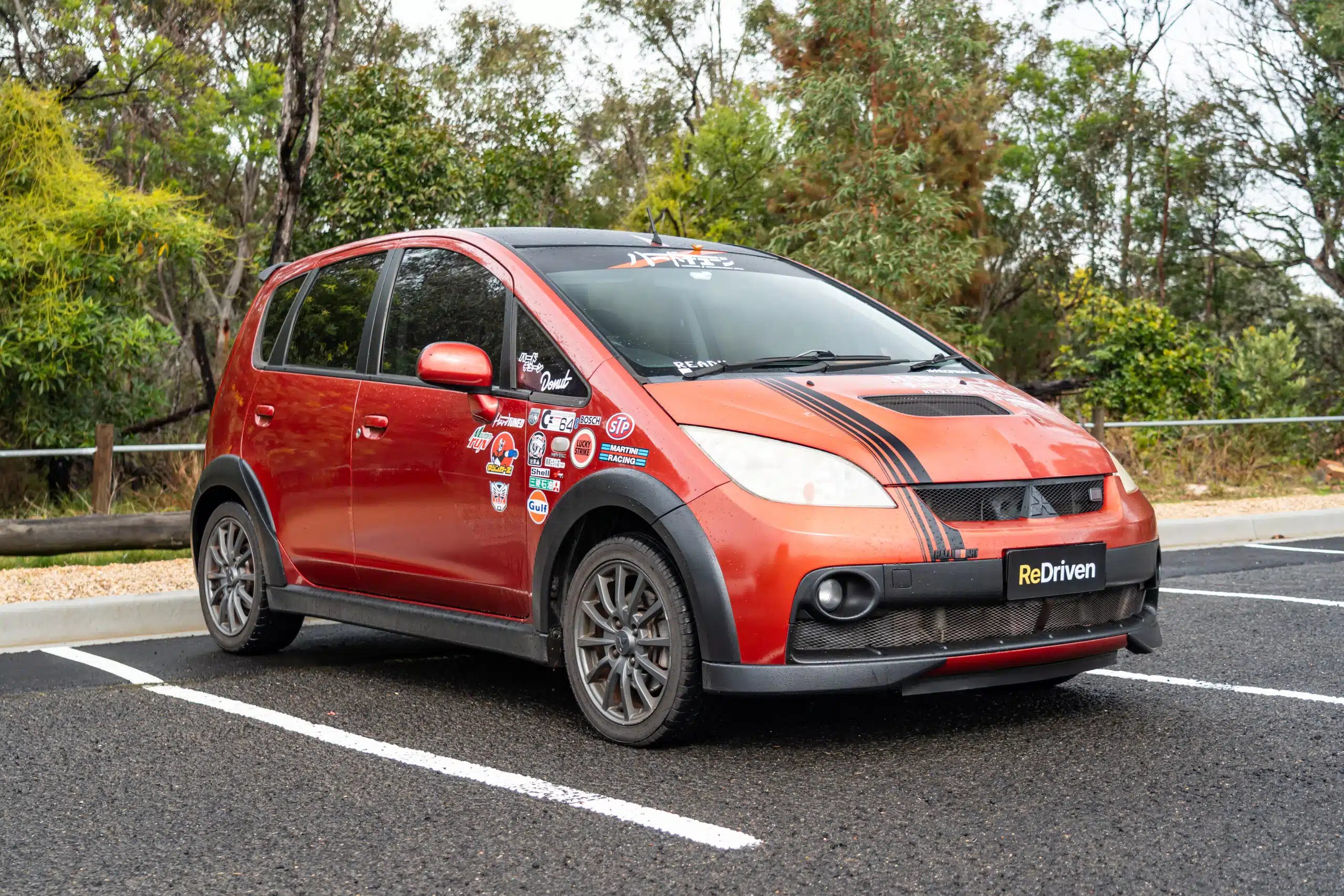
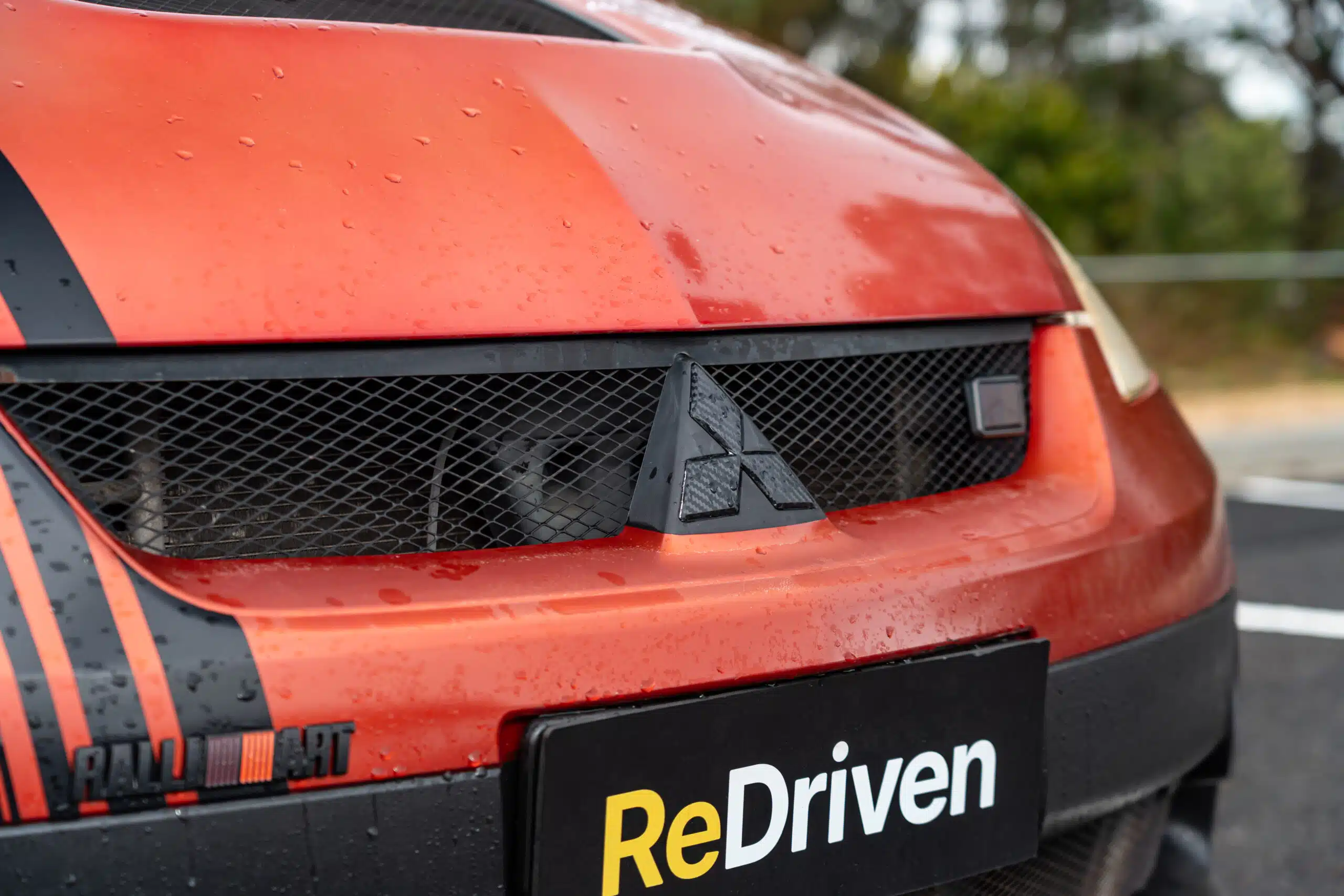
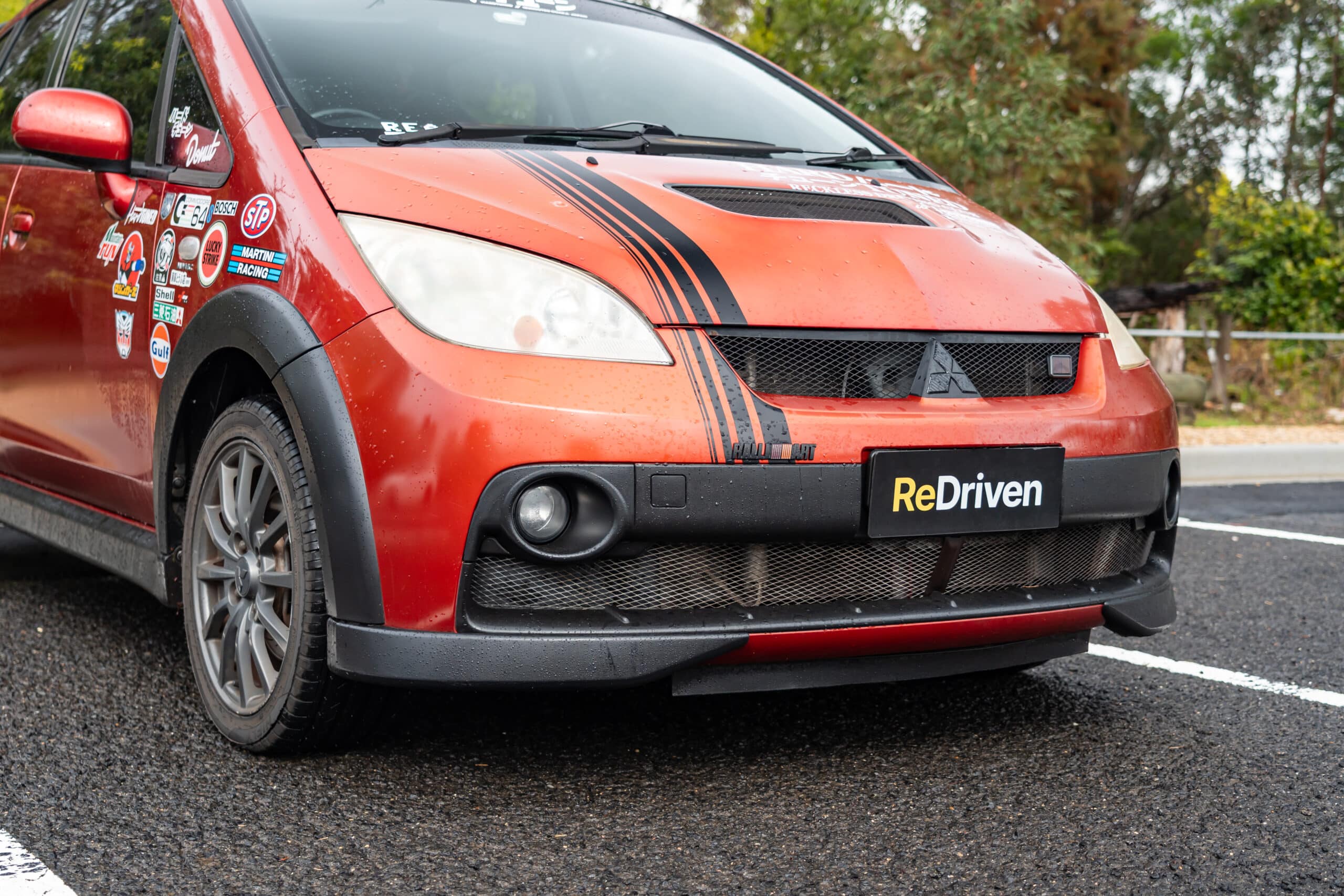
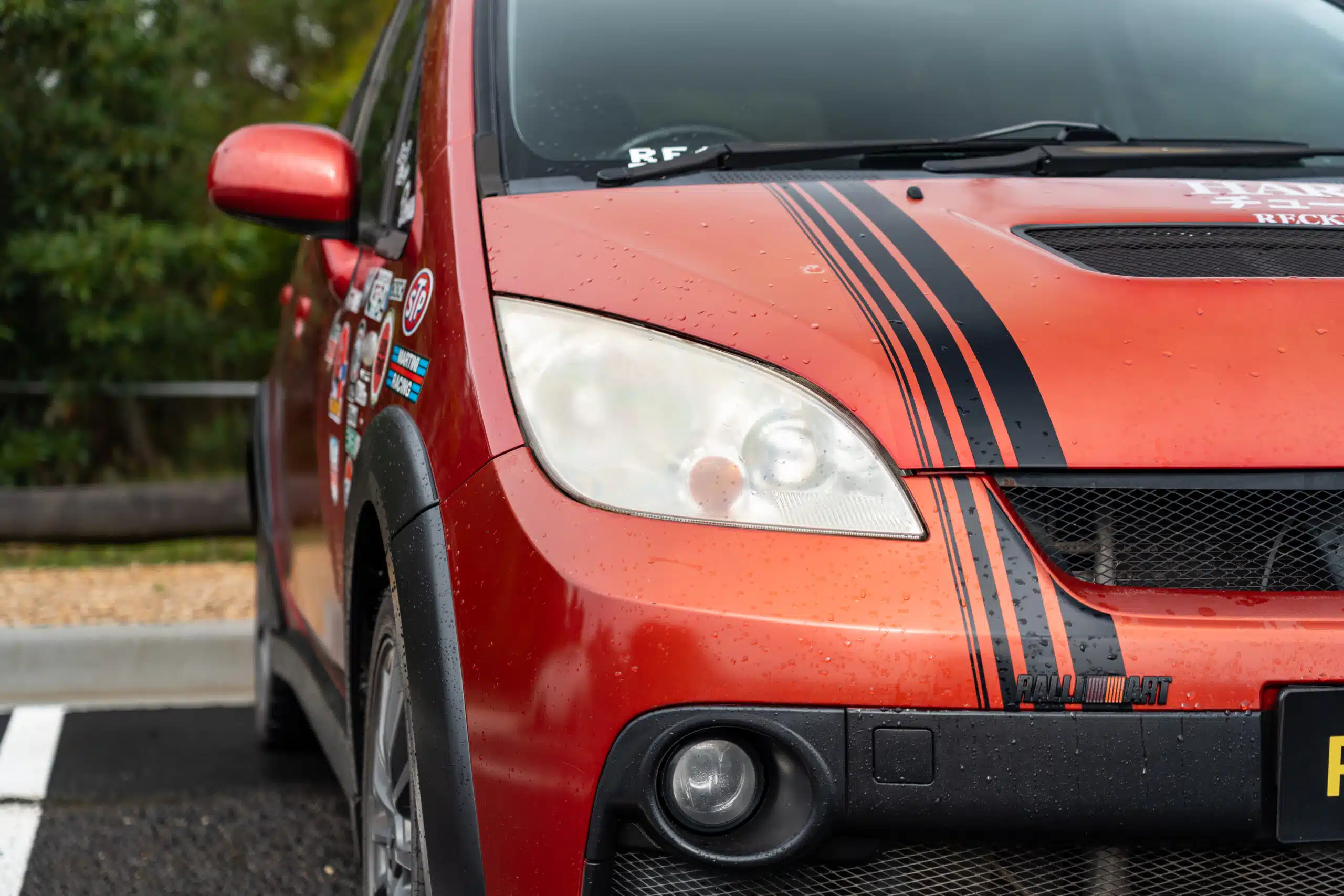
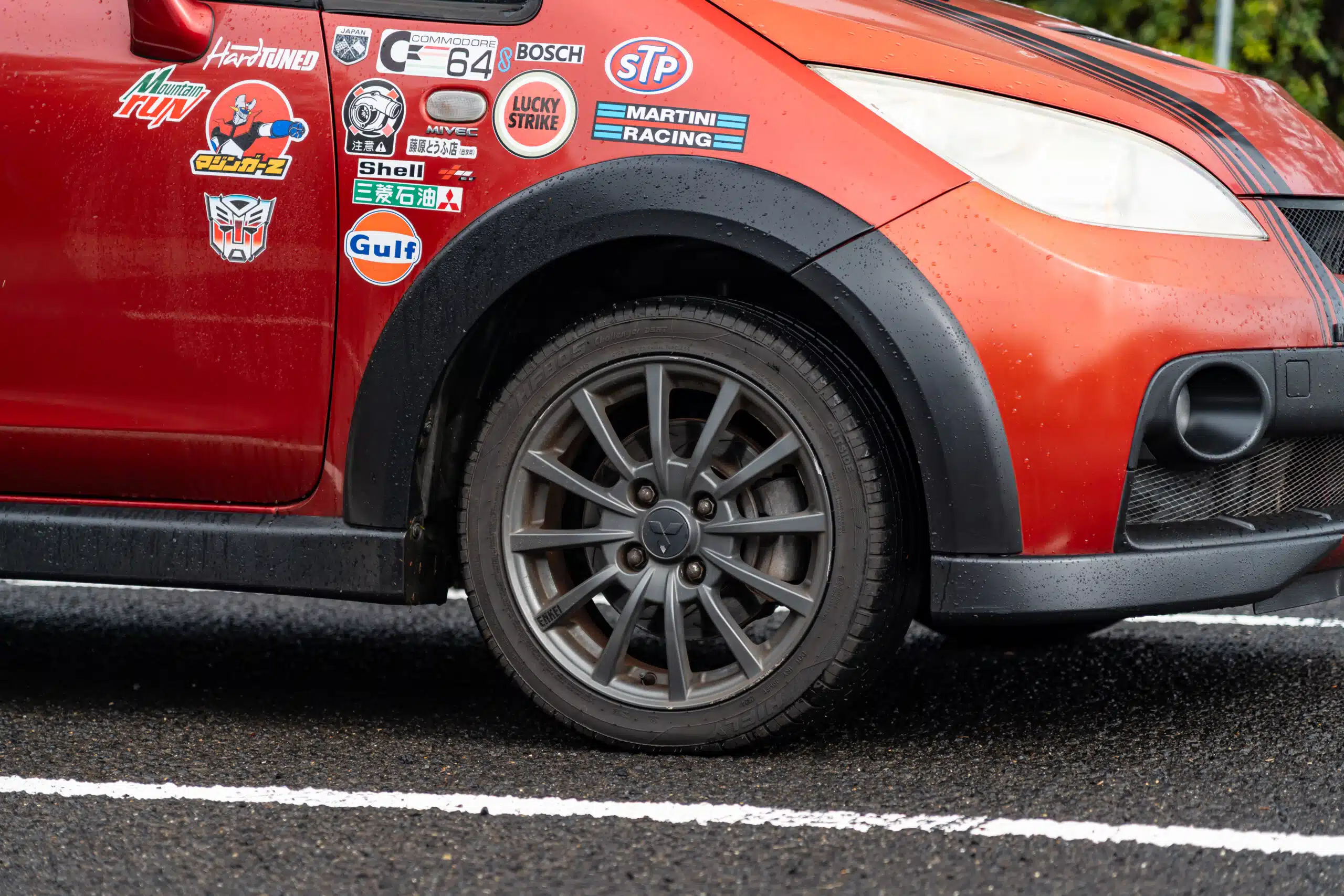
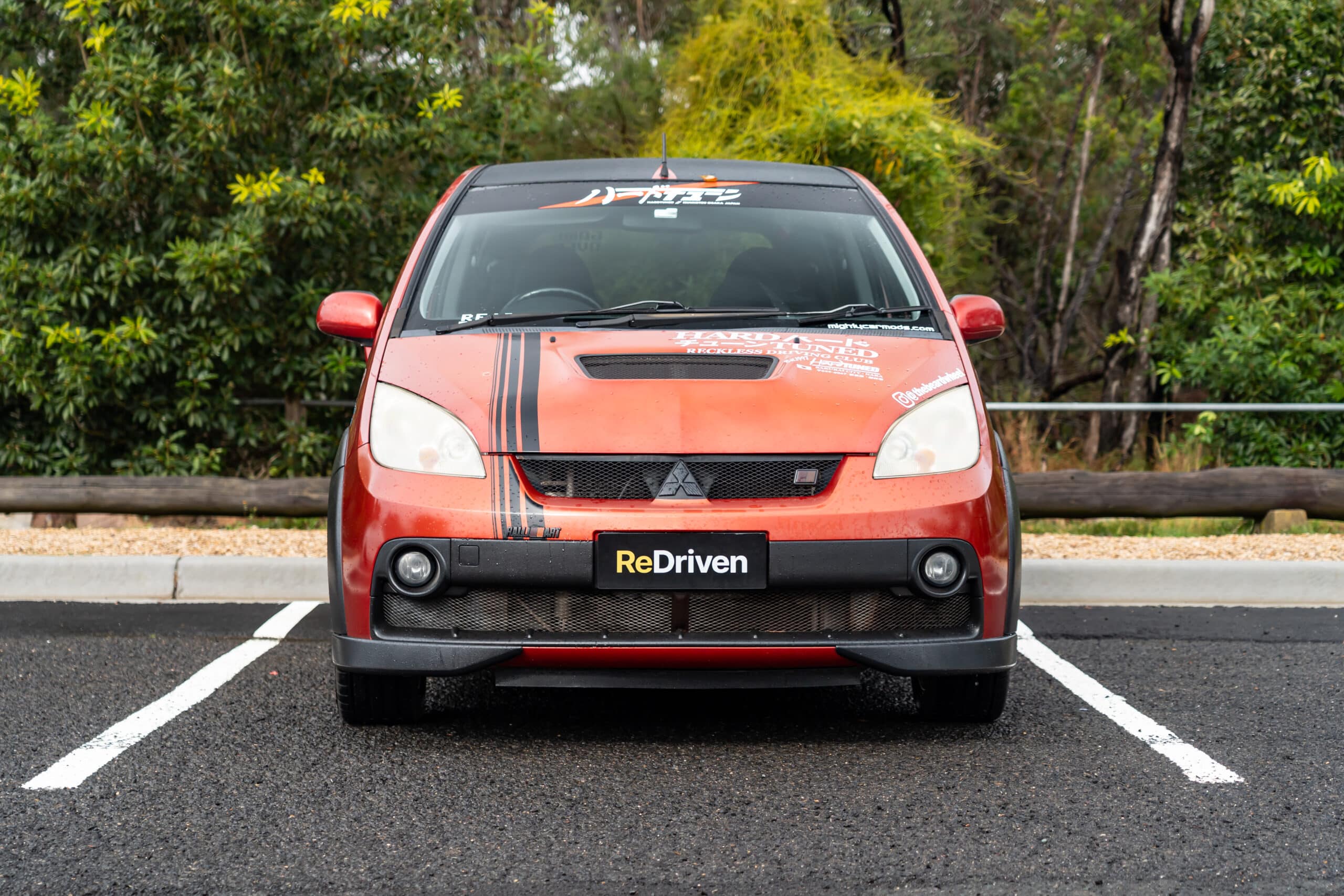
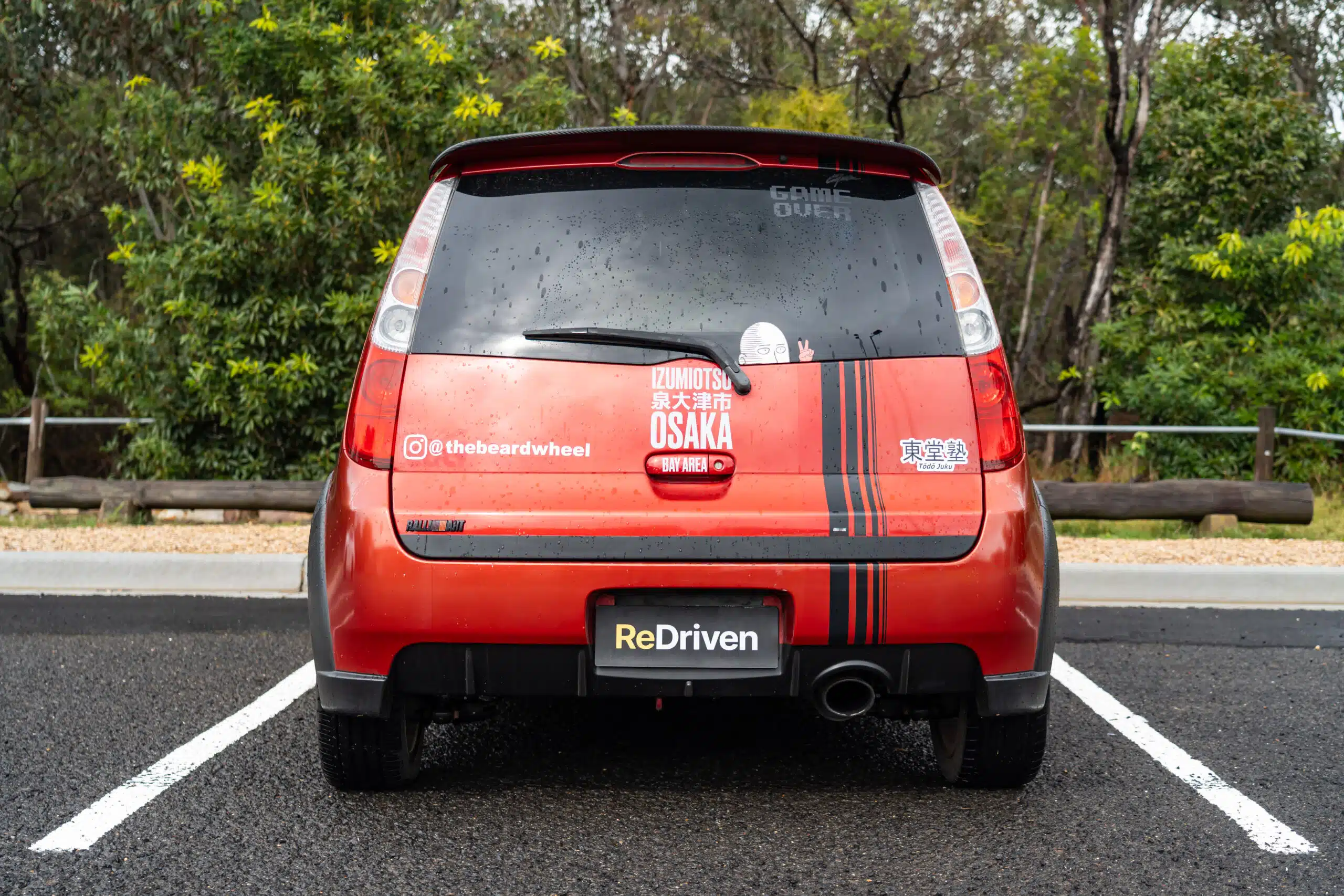
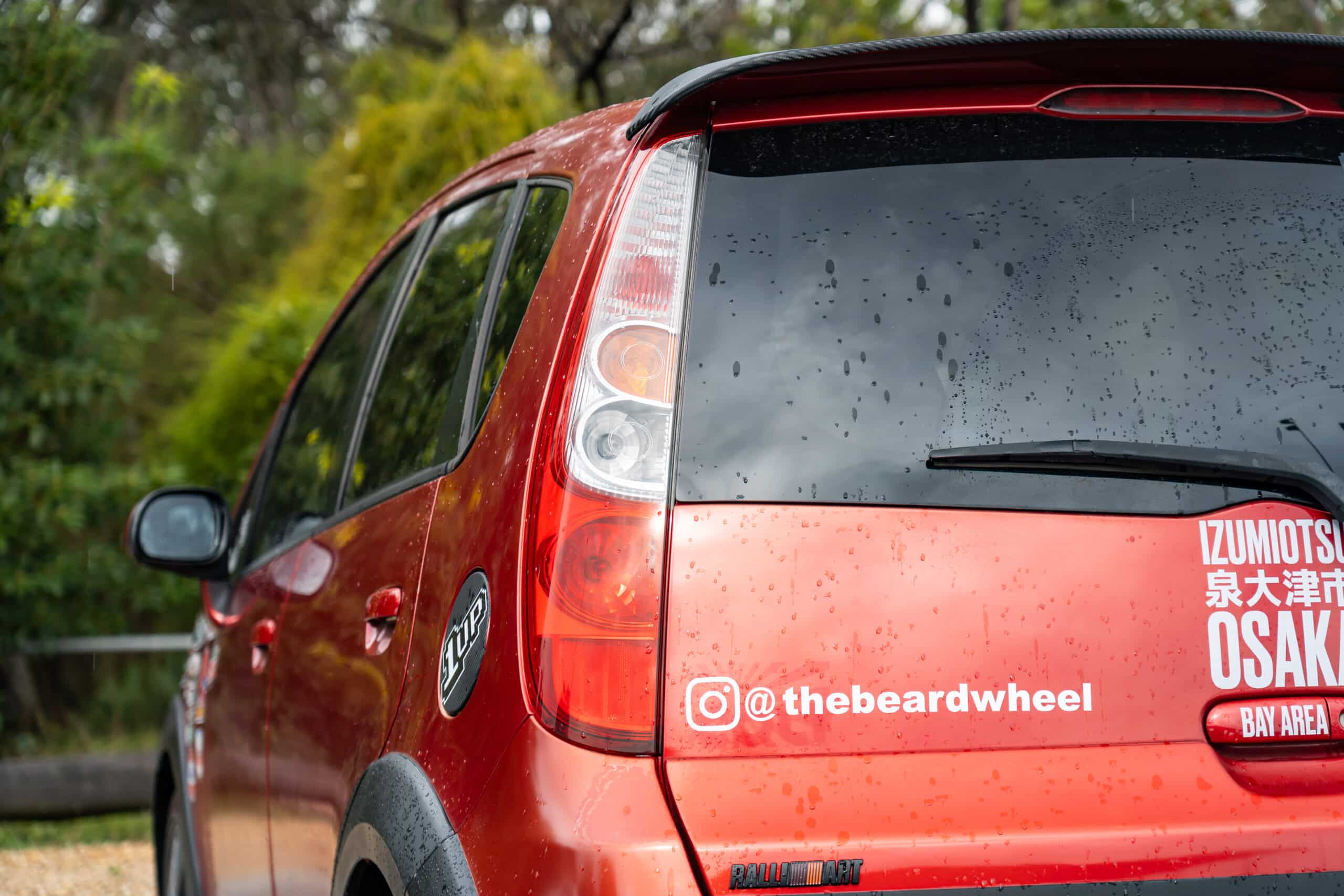
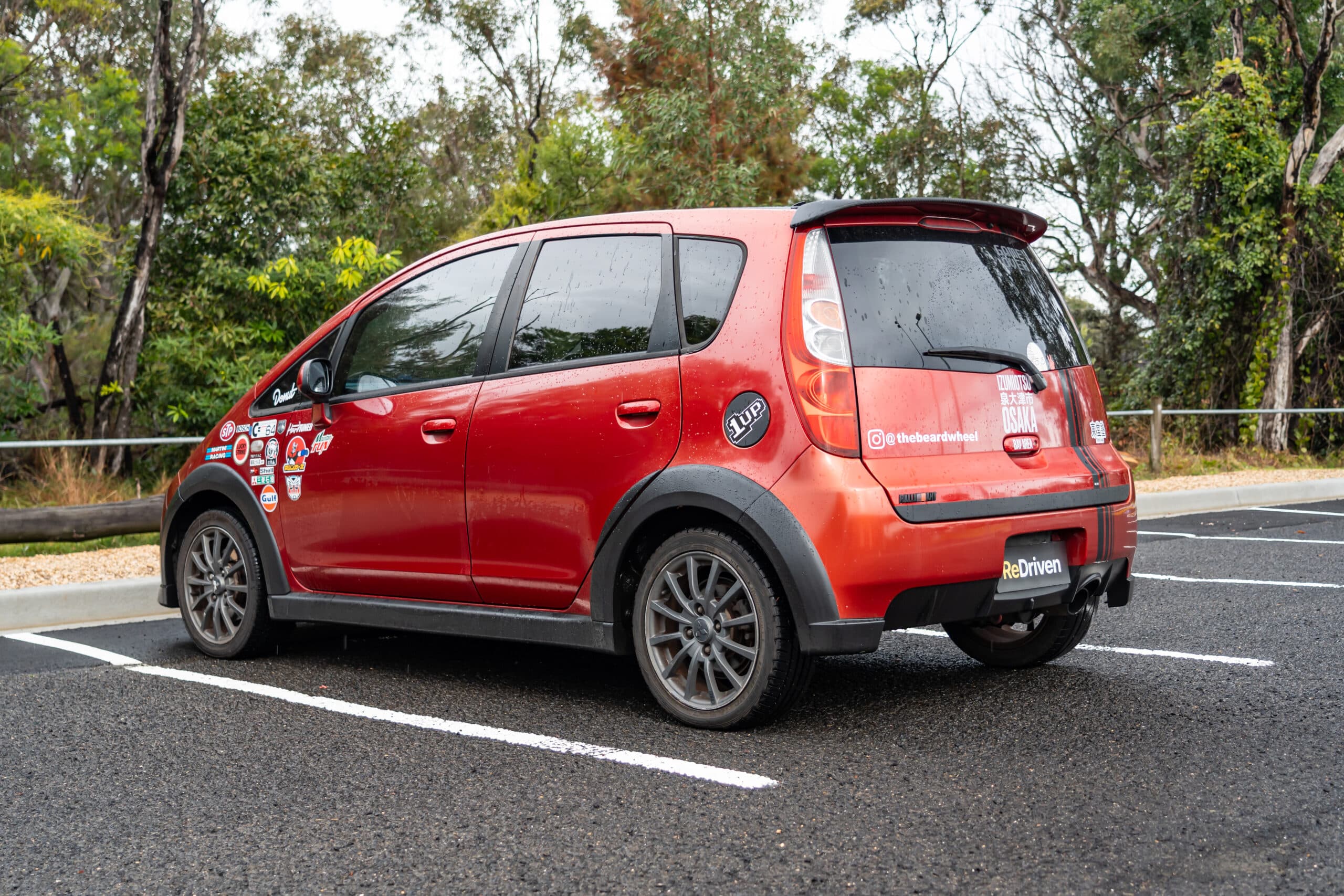
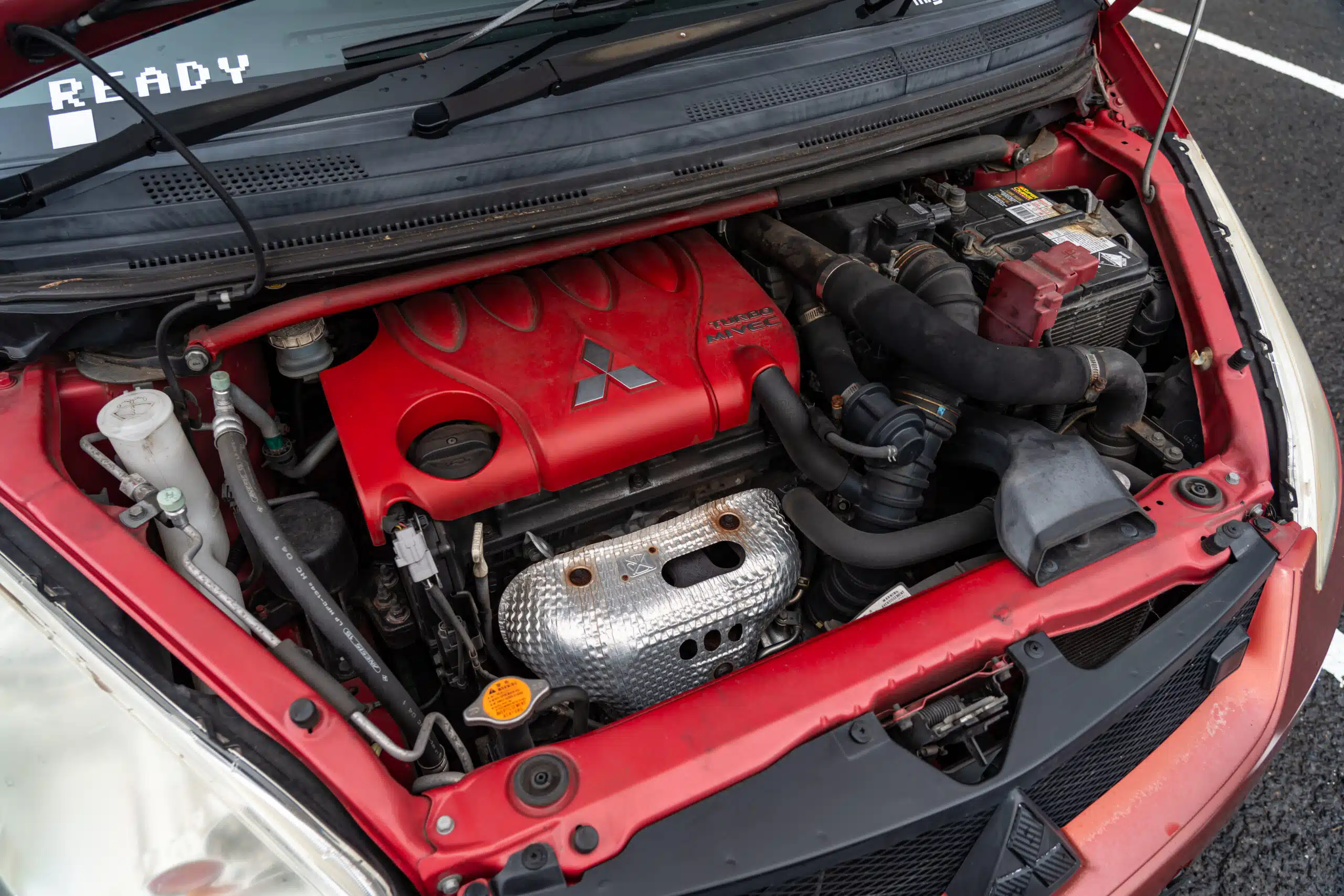

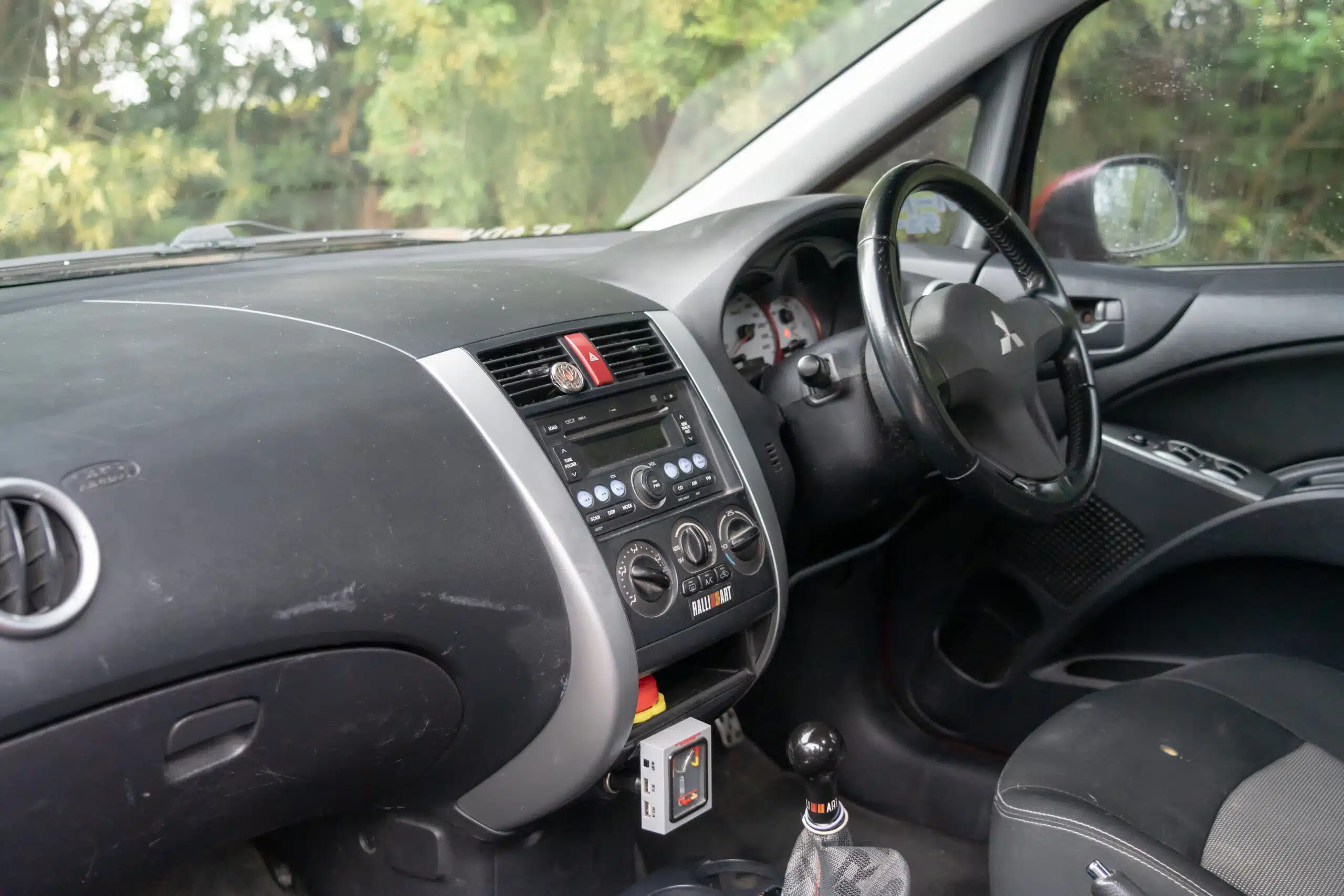
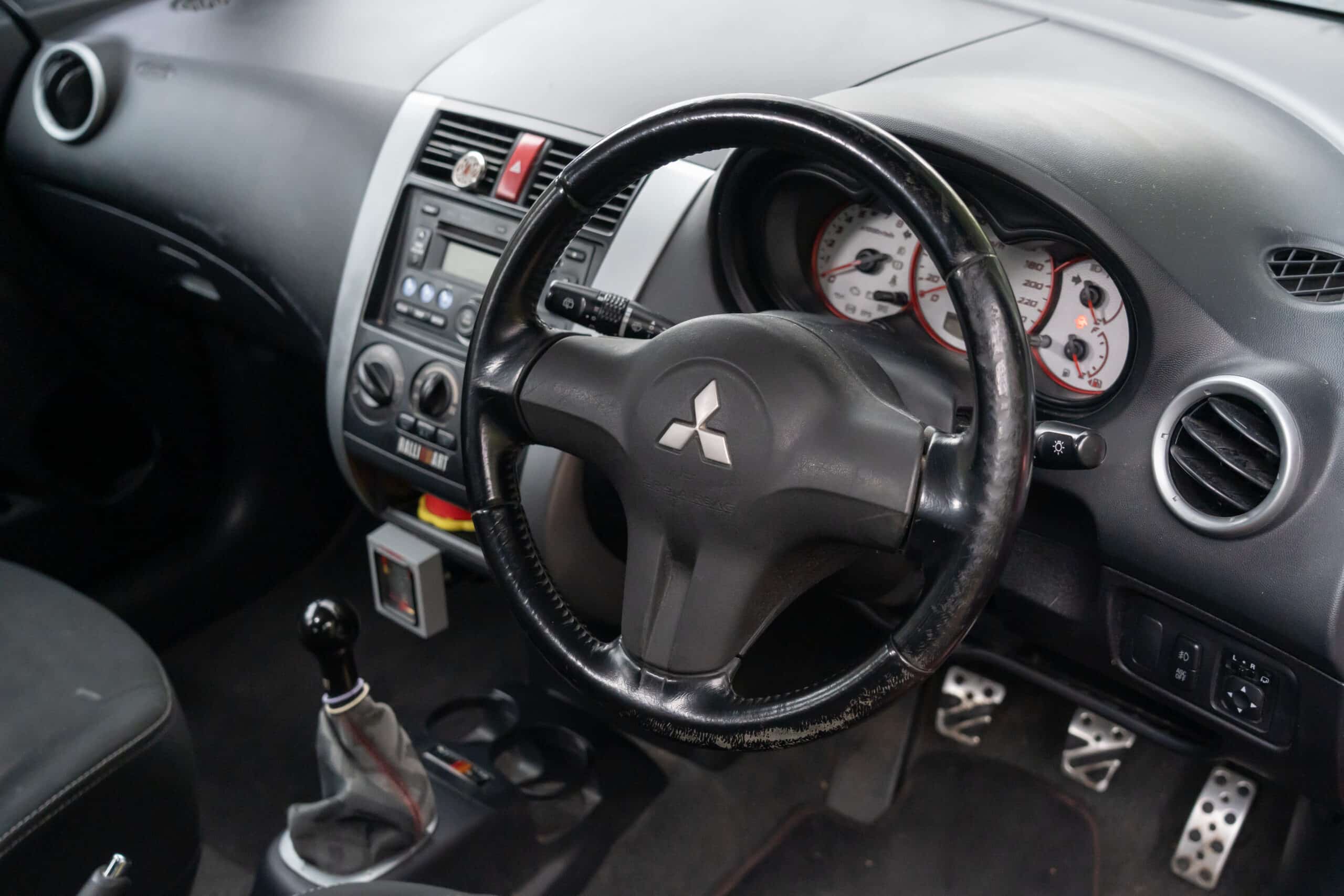
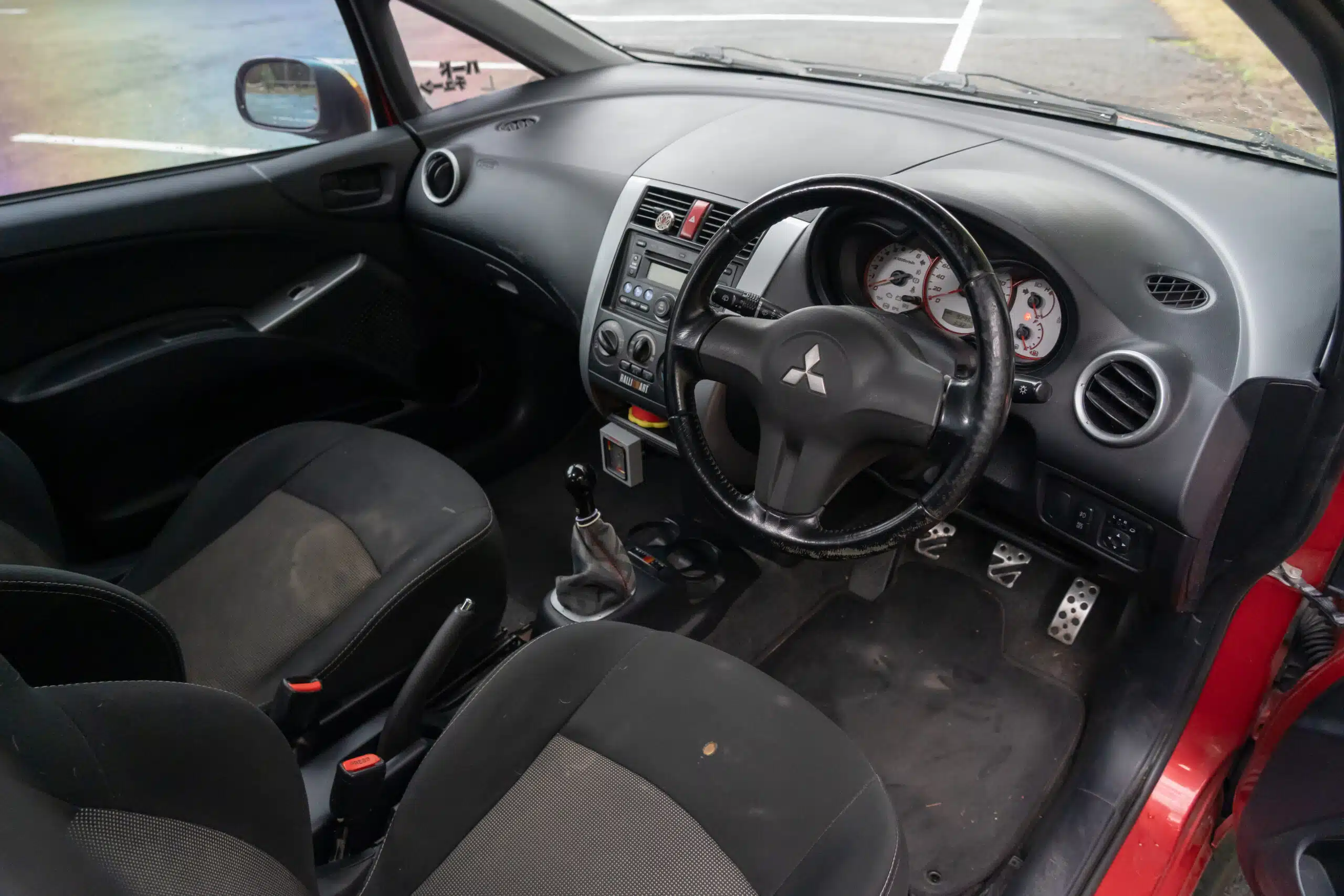






















Exterior:
According to plenty of owners, the paint on these doesn’t take kindly to neglect or long exposure to Australia’s sun-baked climate. It’s not unusual to see examples with clear coat fade, especially on the darker colours. And look, this isn’t Lexus-grade paintwork we’re talking about here, it’s still based on a very budget-conscious little hatch.
Then there are the black plastic and trim pieces… or should we say the fifty shades of grey trim pieces, because chances are they’ll need some quality car care products to bring them back to life, or you could just have them painted. Being a mid-2000s Japanese car, the headlights will inevitably go hazy, but that’s an easy fix with a huge number of DIY tutorials out there.
As far as exterior electrical gremlins go, they’re very rare. The worst we came across were a couple of reports of power windows playing up, but these are generally cheap and simple to sort. What you do need to watch for, though, is accident damage, dodgy mods, and general neglect. Because these are affordable, P-plate legal, and relatively quick, there are plenty of examples on the used market that have been thrashed, crashed, or just not looked after.
Check for all the usual accident repair signs, and if you’re in a warm climate like most of Australia, any signs of rust can often mean accident damage that’s been poorly repaired. If you’re in colder climates, rust can be a bigger issue, so check the entire car thoroughly, especially underneath. And while they’re fun to drive, keep in mind that some exterior trim pieces are getting harder to find. If you have a stack and need those Ralliart-specific parts, you could be waiting months for replacements.
Interior:
Being based on a budget-friendly hatch from this era, the cabin is mostly hard plastics and the switchgear feels a bit cheap, but owners have generally reported excellent durability, short of the steering wheel leather, which might need a re-trim by now. The abundance of plastics also means you might hear a few rattles, but it’s nowhere near as bad as you might expect.
One important note is the seats. The pre-2008 update cars came with Recaros, while the facelift switched to Ralliart sports seats. The Recaros can develop a little play in the rails, so under acceleration or braking you might hear a click, and some owners reckon they’re about as comfortable as dental surgery after 15 minutes. The bolsters can also wear badly, sometimes leaving you with the steel frame digging into your sides.
And, of course, the infotainment is ancient by today’s standards. The Bluetooth is sketchy, there’s
Exterior:
According to plenty of owners, the paint on these doesn’t take kindly to neglect or long exposure to Australia’s sun-baked climate. It’s not unusual to see examples with clear coat fade, especially on the darker colours. And look, this isn’t Lexus-grade paintwork we’re talking about here, it’s still based on a very budget-conscious little hatch.
Then there are the black plastic and trim pieces… or should we say the fifty shades of grey trim pieces, because chances are they’ll need some quality car care products to bring them back to life, or you could just have them painted. Being a mid-2000s Japanese car, the headlights will inevitably go hazy, but that’s an easy fix with a huge number of DIY tutorials out there.
As far as exterior electrical gremlins go, they’re very rare. The worst we came across were a couple of reports of power windows playing up, but these are generally cheap and simple to sort. What you do need to watch for, though, is accident damage, dodgy mods, and general neglect. Because these are affordable, P-plate legal, and relatively quick, there are plenty of examples on the used market that have been thrashed, crashed, or just not looked after.
Check for all the usual accident repair signs, and if you’re in a warm climate like most of Australia, any signs of rust can often mean accident damage that’s been poorly repaired. If you’re in colder climates, rust can be a bigger issue, so check the entire car thoroughly, especially underneath. And while they’re fun to drive, keep in mind that some exterior trim pieces are getting harder to find. If you have a stack and need those Ralliart-specific parts, you could be waiting months for replacements.
Interior:
Being based on a budget-friendly hatch from this era, the cabin is mostly hard plastics and the switchgear feels a bit cheap, but owners have generally reported excellent durability, short of the steering wheel leather, which might need a re-trim by now. The abundance of plastics also means you might hear a few rattles, but it’s nowhere near as bad as you might expect.
One important note is the seats. The pre-2008 update cars came with Recaros, while the facelift switched to Ralliart sports seats. The Recaros can develop a little play in the rails, so under acceleration or braking you might hear a click, and some owners reckon they’re about as comfortable as dental surgery after 15 minutes. The bolsters can also wear badly, sometimes leaving you with the steel frame digging into your sides.
And, of course, the infotainment is ancient by today’s standards. The Bluetooth is sketchy, there’s no Apple CarPlay or Android Auto as standard, the speakers aren’t great, and interior sound insulation seems to consist of a single tuft of cotton wool.
Driving:
Visibility out the front 3/4 is not exactly the Colt Ralliart’s strong point. The A-pillars are so thick it feels like they could double as the supporting beams for an apartment block. Then there are those occasional rattles and odd noises from the cabin, but honestly, just enjoy the turbo soundtrack and you’ll probably forget about them.
A number of owners also mention the throttle response can feel a bit lacklustre, and there’s sometimes a touch of rev hang. The good news is that the owners’ groups and forums have a wealth of information and simple fixes for these quirks.
Mechanically:
Overall, these are very reliable little hot hatches. Coolant and oil leaks aren’t especially common, certainly no more so than any other Japanese car.
There are occasional reports of fuel pump issues that can cause a lean air/fuel ratio, but again, it’s not widespread.
One thing to be aware of is exhaust manifold cracking, particularly on tuned examples running higher boost. The timing belt is due every 100,000 km or five years, and serious engine problems are almost always down to heavily modified cars with poor tunes, with pistons and rods being the common casualties.
Transmission:
The shift cables and linkages can wear over time and cause shifting issues, and the synchros aren’t the strongest, so if you rush gear changes you might get a bit of crunch.
Transmission bearings are another known weak point, with high mileage and poor servicing making it worse.
Clutch wear can be premature too, but a bit of mechanical sympathy and not driving like an absolute tool will go a long way to extending the life of your gearbox.
Exterior:
According to plenty of owners, the paint on these doesn’t take kindly to neglect or long exposure to Australia’s sun-baked climate. It’s not unusual to see examples with clear coat fade, especially on the darker colours. And look, this isn’t Lexus-grade paintwork we’re talking about here, it’s still based on a very budget-conscious little hatch.
Then there are the black plastic and trim pieces… or should we say the fifty shades of grey trim pieces, because chances are they’ll need some quality car care products to bring them back to life, or you could just have them painted. Being a mid-2000s Japanese car, the headlights will inevitably go hazy, but that’s an easy fix with a huge number of DIY tutorials out there.
As far as exterior electrical gremlins go, they’re very rare. The worst we came across were a couple of reports of power windows playing up, but these are generally cheap and simple to sort. What you do need to watch for, though, is accident damage, dodgy mods, and general neglect. Because these are affordable, P-plate legal, and relatively quick, there are plenty of examples on the used market that have been thrashed, crashed, or just not looked after.
Check for all the usual accident repair signs, and if you’re in a warm climate like most of Australia, any signs of rust can often mean accident damage that’s been poorly repaired. If you’re in colder climates, rust can be a bigger issue, so check the entire car thoroughly, especially underneath. And while they’re fun to drive, keep in mind that some exterior trim pieces are getting harder to find. If you have a stack and need those Ralliart-specific parts, you could be waiting months for replacements.
Interior:
Being based on a budget-friendly hatch from this era, the cabin is mostly hard plastics and the switchgear feels a bit cheap, but owners have generally reported excellent durability, short of the steering wheel leather, which might need a re-trim by now. The abundance of plastics also means you might hear a few rattles, but it’s nowhere near as bad as you might expect.
One important note is the seats. The pre-2008 update cars came with Recaros, while the facelift switched to Ralliart sports seats. The Recaros can develop a little play in the rails, so under acceleration or braking you might hear a click, and some owners reckon they’re about as comfortable as dental surgery after 15 minutes. The bolsters can also wear badly, sometimes leaving you with the steel frame digging into your sides.
And, of course, the infotainment is ancient by today’s standards. The Bluetooth is sketchy, there’s no Apple CarPlay or Android Auto as standard, the speakers aren’t great, and interior sound insulation seems to consist of a single tuft of cotton wool.
Driving:
Visibility out the front 3/4 is not exactly the Colt Ralliart’s strong point. The A-pillars are so thick it feels like they could double as the supporting beams for an apartment block. Then there are those occasional rattles and odd noises from the cabin, but honestly, just enjoy the turbo soundtrack and you’ll probably forget about them.
A number of owners also mention the throttle response can feel a bit lacklustre, and there’s sometimes a touch of rev hang. The good news is that the owners’ groups and forums have a wealth of information and simple fixes for these quirks.
Mechanically:
Overall, these are very reliable little hot hatches. Coolant and oil leaks aren’t especially common, certainly no more so than any other Japanese car.
There are occasional reports of fuel pump issues that can cause a lean air/fuel ratio, but again, it’s not widespread.
One thing to be aware of is exhaust manifold cracking, particularly on tuned examples running higher boost. The timing belt is due every 100,000 km or five years, and serious engine problems are almost always down to heavily modified cars with poor tunes, with pistons and rods being the common casualties.
Transmission:
The shift cables and linkages can wear over time and cause shifting issues, and the synchros aren’t the strongest, so if you rush gear changes you might get a bit of crunch.
Transmission bearings are another known weak point, with high mileage and poor servicing making it worse.
Clutch wear can be premature too, but a bit of mechanical sympathy and not driving like an absolute tool will go a long way to extending the life of your gearbox.
We’ve hit a bit of a snag with this one, because as much as we want to give the Colt Ralliart an enthusiastic thumbs-up, the reality is that far too many have been completely ruined by previous owners with more enthusiasm than mechanical sympathy. Sadly, a mix of affordability, P-plate legality, and turbocharged fun has meant a lot of these cars have lived pretty hard lives.
If you’re looking at one purely as a long-term project, something that’s going to sit in your shed for the next decade while you slowly chip away at its endless list of quirks and problems, then by all means, grab any old example you find. You’ll probably spend more time in overalls than behind the wheel, but that’s all part of the project-car romance.
However, if your plan is to actually get in, turn the key, and enjoy driving the thing without constantly worrying about what’s about to break next, then patience is your friend. Wait for the right example to come along, make sure it passes a proper pre-purchase inspection, and then pounce. Get a good one, and the Colt Ralliart is a brilliant little hot hatch, full of character, genuinely fun to drive, and just rare enough to feel special every time you take it out.
We’ve hit a bit of a snag with this one, because as much as we want to give the Colt Ralliart an enthusiastic thumbs-up, the reality is that far too many have been completely ruined by previous owners with more enthusiasm than mechanical sympathy. Sadly, a mix of affordability, P-plate legality, and turbocharged fun has meant a lot of these cars have lived pretty hard lives.
If you’re looking at one purely as a long-term project, something that’s going to sit in your shed for the next decade while you slowly chip away at its endless list of quirks and problems, then by all means, grab any old example you find. You’ll probably spend more time in overalls than behind the wheel, but that’s all part of the project-car romance.
However, if your plan is to actually get in, turn the key, and enjoy driving the thing without constantly worrying about what’s about to break next, then patience is your friend. Wait for the right example to come along, make sure it passes a proper pre-purchase inspection, and then pounce. Get a good one, and the Colt Ralliart is a brilliant little hot hatch, full of character, genuinely fun to drive, and just rare enough to feel special every time you take it out.
We’ve hit a bit of a snag with this one, because as much as we want to give the Colt Ralliart an enthusiastic thumbs-up, the reality is that far too many have been completely ruined by previous owners with more enthusiasm than mechanical sympathy. Sadly, a mix of affordability, P-plate legality, and turbocharged fun has meant a lot of these cars have lived pretty hard lives.
If you’re looking at one purely as a long-term project, something that’s going to sit in your shed for the next decade while you slowly chip away at its endless list of quirks and problems, then by all means, grab any old example you find. You’ll probably spend more time in overalls than behind the wheel, but that’s all part of the project-car romance.
However, if your plan is to actually get in, turn the key, and enjoy driving the thing without constantly worrying about what’s about to break next, then patience is your friend. Wait for the right example to come along, make sure it passes a proper pre-purchase inspection, and then pounce. Get a good one, and the Colt Ralliart is a brilliant little hot hatch, full of character, genuinely fun to drive, and just rare enough to feel special every time you take it out.
Have ultimate peace of mind when buying a used car by purchasing an official PPSR report.
Please note that pricing information is subject to fluctuations in the automotive market.
Information correct as of August 15, 2025.
The advice provided on this website is general advice only. It has been prepared without taking into account your objectives, financial situation or needs. Before acting on this advice, you should consider the appropriateness of the advice, having regard to your own objectives, financial situation and needs.
Read our full terms and conditions here.
You are the best, the content in your videos is so helpful, delivered in a great way. Please keep going as for sure you are unique in every way. All the best from Guatemala
L. G. - YouTube
You guys have truly found something wonderful… Loved this channel ever since from the beginning… Will support you guys as long as you guys keep making these wonderful car reviews…
Calvin - YouTube
This is probably the best channel I have ever seen when reviewing vehicles. New or old. The honesty is so appreciated. I’ve been a mechanic for 20 years and I find it very informative when looking for a vehicle for my daughter. Keep up the awesome work.
Jason T. - YouTube
© 2025 ReDriven All Rights Reserved